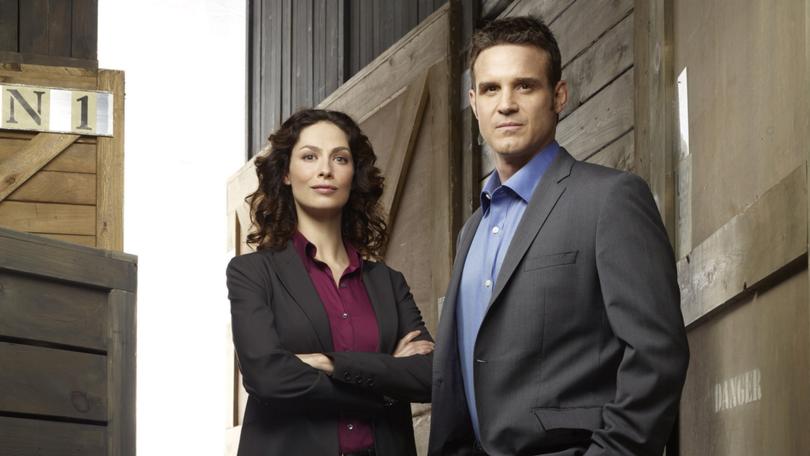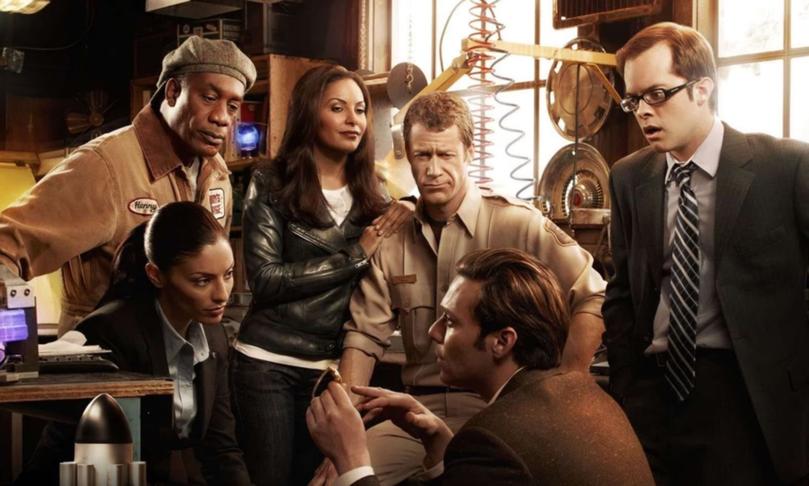Not just Suits: The other 2000s binge-able TV shows you should be watching

Suits became the unlikely hero of the streaming business when last year it was topped the American charts for 12 weeks in a row.
The legal series had just hit Netflix in the US (Suits has been on Netflix in Australia for some years) and those who didn’t catch the show during its original run from 2011 to 2019 flocked to its dramatic twists, betrayals and attractive cast members who, at least once an episode, would strut down the fictional law firm’s hallways with purpose.
Why were the Americans all of a sudden so into Suits, a series that is now best remembered for making Meghan Markle famous as the fourth billed actor on a show that never won any proper awards?
Sign up to The Nightly's newsletters.
Get the first look at the digital newspaper, curated daily stories and breaking headlines delivered to your inbox.
By continuing you agree to our Terms and Privacy Policy.It was grippy and quippy and it had one of those classic broadcast models where most episodes had one contained story while a larger arc ran throughout the series or the season. Think of The X-Files or Buffy, which had a monster of the week but there was still the mythology or the romantic entanglements that carried from week to week.
In Suits, at least for the first few seasons, it was whether Mike Ross (Patrick J. Adams), a lawyer with faked qualifications but an eidetic memory, would get caught for being the fraud he is. Or whether Harvey (Gabriel Macht) and his sassy assistant Donna (Sarah Rafferty) would finally get together. Or who will run the firm after takeovers, take-back-overs and various corporate machinations?
But in that repetition (Mike was NEARLY caught so many times before he really did get found out) you knew what you were going to get, and that fuzzy familiarity stretched out for 134 episodes.

In an era of TV where new series run eight episodes, sometimes less, rarely more, the security blanket of a 134-episode show means not having to always be on the hunt for something to watch. Every time you turned on the TV, there would be another episode to escape into, at least for a couple of months.
And escape is the watchword here. Suits was rarely confronting or challenging. It skimmed social issues but didn’t dive in. The characters were generally likeable — yes, even Louis Litt, eventually — and villains were rotated off after an arc was completed. It’s like hanging out with very hot friends with fabulous wardrobes.
Not for nothing but during its original run, Suits was consistently in the top 10 most pirated shows in Australia.
But Suits wasn’t the only show of its time in that template. Its original network in America was called the USA Network and it had a slate of programs that was dubbed “blue sky TV”. They were all procedural shows with recognisable archetypes and environments, a jovial tone, and they all ran for a long time. There were also some series on the Syfy channel that fit the mould.
If Netflix, Disney, Amazon Prime or any of the other streamers have some spare cash lying about, they should go out and licence these shows, or at least the ones they don’t have. Three of them are streamable but the rest you’ll have to buy through Apple, Google or your digital purchase platform of choice.
PSYCH
2006-2014 - 8 seasons, 120 episodes

The detective comedy centres on Shawn Spencer (James Roday Rodriguez), a twentysomething with a photographic memory and an encyclopedia of pop culture knowledge who convinces the Santa Barbara police that he’s a psychic. Really, he’s just incredible at deductive reasoning.
Together with his bestie Gus (Dule Hill) and occasionally his retired cop dad (Corbin Bernsen), they solve cases around town. It’s riotously fun, often goofy and had some incredible guest stars, including four of the five Breakfast Club cast, Tim Curry and Tears for Fears’ Curt Smith. Plus, there were themed episodes dedicated to Twin Peaks, the Cluedo movie, Hitchcock, The Hangover and Friday the 13th.
ROYAL PAINS
2009-2016, 8 seasons, 104 episodes

When it comes to blue skies, Royal Pains had it in spades. The series was set in the Hamptons, the summer playground of New York’s elite so everything in the show was very pretty and bright.
The story was about Hank, a city doctor who was pushed out of his job and ended up becoming the concierge doctor to the rich set, and his brother Evan, a go-getter always cooking up another scheme. It may sound kind of obnoxious, but the series also gave Hank opportunities to tend to the less well-off.
Because the series was filmed in New York, it called on Broadway luminaries such as Christine Baranski and Katie Finneran as guest stars in addition to the likes of Tony Hale, Gillian Jacobs, Henry Winkler and Michael Rappaport. It was also one of Timothee Chalamet’s first roles – he guest-starred in four episodes as a teen.
WHITE COLLAR
2009-2014, 6 seasons, 81 episodes

White Collar is actually on Disney+ so you can start streaming this one immediately. Meet Neal Caffrey, he’s a world-class conman, an expert forger and a dazzlingly charismatic thief.
He also has a penchant for sharp tailoring and a fedora hat. Neal is sprung from prison by the FBI agent who put him there so they can work together to catch other crims like Neal.
Who better to outwit the conman than the best conman? It stars Matt Bomer as Neal and Tim DeKay as Agent Peter Burke, and their evolving friendship is one of the highlights of the series. Plus, because it’s set in the world of thieves and forgers, the crimes tend to be rather elegant, mostly.
BURN NOTICE
2007-2013, 7 seasons, 111 episodes and a movie

In the intelligence community, a burn notice is issued when a spy is fired. Persona non-grata with no way back in. That’s what happens to Michael Weston (Jeffrey Donovan), who is burned in the middle of an operation.
With nowhere else to go and enemies coming out of the woodwork, he goes home to his mum in Miami. But even a retired spy attracts trouble and that’s certainly true for the former special forces operative who with his ex-girlfriend Fiona, friend Sam and his mum, solves cases as a private investigator for hire while trying to figure out who betrayed him.
MONK
2002-2009, 8 seasons, 125 episodes

The original USA Network series that kicked off its 2000s, Tony Shalhoub’s Adrian Monk made for an unlikely private detective. He has near-debilitating obsessive-compulsive disorder and a bunch of phobias, plus he’s still dealing with the murder of his wife Trudy.
But he has a brilliant brain and is a whip-smart investigator who sees things others don’t. The character was apparently inspired by Sherlock Holmes. He sometimes oversteps the bounds and plenty find his methods odd and off-putting, but Monk gets results.
And he’s inherently a really decent guy. It’s an old-school detective story and Shalhoub’s compassionate performance netted him three Emmys. It’s streaming on Netflix.
EUREKA
2006-2012, 5 seasons, 77 episodes

If you’ve seen Oppenheimer, then the idea of a town built for the world’s smartest scientists isn’t a stretch. But in Eureka, the goal isn’t to build an atomic weapon but to explore all the possibilities of advanced science.
In this town, there’s technology that can teleport people and open rifts in space and time but it’s the smaller things that are the most entertaining – like an ultra-sonic fishing rod, an AI house or a dream-reading device.
The story revolves around Jack Carter, the sheriff of the town tasked with keeping chaos under control (it’s challenging) and while he’s a smart guy, he’s not astrophysicist smart. But when there are lots of big brains around, sometimes what you need is common sense.
WAREHOUSE 13
2009-2014, 5 seasons, 65 episodes

If The X-Files was too dark for you then Warehouse 13 is more your speed. But instead of aliens, frightening supernatural goings-on and sinister government conspiracies, Warehouse 13 deals in ancient artefacts or historically significant objects going awry.
There is supernatural and conspiracy stuff, but it’s far less terrifying. The show follows a team of government agents who track down dangerous objects to lock them away in “warehouses” – such as Napoleon’s violin which can summon glowing balls of violent energy, or Hatshepsut’s golden beehive, which can manipulate people with pheromones.

